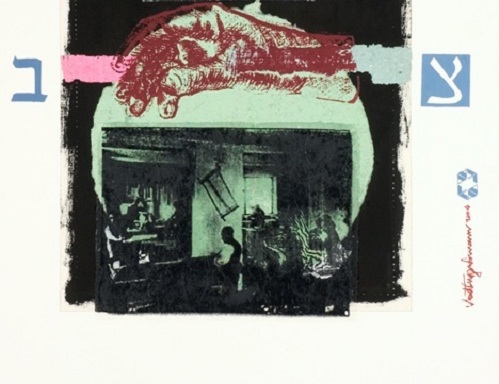Crime propaganda in nazi police movies
DOI:
https://doi.org/10.17851/1982-3053.3.5.51-72Keywords:
Cine, Nazism, CrimeAbstract
The most common crimes in the nazi movies were the seduction of women, the forgery of amounts, the theft of German documents and inventions, the fraud that damaged the people and overall the theft of jewelry. The criminals were represented with similar physical features: adiposes, dim and sensual look, with mustaches that decorated thick lips. Such biotypes were widely related to the Jewish in the anti Semitic caricatures. Nazi and pre Nazi widely spread in the press media of the Third Reich.
Downloads
References
ARENDT, Hannah. Origens do totalitarismo. São Paulo: Cia. das Letras, 1989.
BAER, Harry. A vida sufocante de Fassbinder. São Paulo: Editora Brasiliense, 1982.
BARTHES, Roland. Aula. São Paulo: Cultrix, 1979.
BEYER, Friedemann. Peter Lorre. Seine Filme, sein Leben. Munique: Wilhelm Heyne, 1988.
BRENNER, Hildegard. La politique artistique du national-socialisme. Paris: Maspéro, 1980.
DELAGE, Christian. La vision nazie de l’Histoire à travers le cinéma documentaire du Troisième Reich. Lausanne: L’Age d’Homme, 1989.
DREWNIAK, Boguslaw. Der deutsche Film 1938-1945 - Ein Gesamtüberblick. Düsseldorf: Droste, 1987.
FASSBINDER, Rainer Werner. Die Anarchie der Phantasie. Frankfurt: Fischer, 1986.
FASSBINDER, Rainer Werner. Les films libèrent la tête. Paris: L’Arche, 1985.
FURHAMMAR, Leif e ISAKSSON, Folke. Cinema e política. Rio de Janeiro: Paz e Terra, 1976.
GIESEN, Rolf; HOBSCH, Manfred: Hitlerjunge Quex, Jud Süss und Kolberg. Die Propagandafilme des Dritten Reiches. Dokumente und Materialien zum NS-Film. Berlin: Schwarzkopf & Schwarzkopf Verlag 2005.
HARLAN, Veit. Le cinéma allemand selon Goebbels – Souvenirs. Paris: France-Empire, 1974.
HILBERG, Raul. La destruction des Juifs d’Europe. Paris: Gallimard, 1991.
HOLLSTEIN, Dorothea. Jud Süß und die Deutschen – Antisemitische Vorurteile im nationalsozialistischen Spielfilm. Berlin: Ullstein, 1983.
JANSEN, Peter; SCHÜTTE, Wolfram. Rainer Werner Fassbinder. Frankfurt: Fischer, 1992.
KATZ, Robert. O amor é mais frio que a morte. São Paulo: Editora Brasiliense, 1992.
KOCH, Gertrude. Die Einstellung ist die Einstellung, Frankfurt: Suhrkamp,1992.
NAZARIO, Luiz. De Caligari a Lili Marlene. São Paulo: Editora Globo, 1983.
NAZARIO, Luiz. Fassbinder e a morte, in: Revista Cultura Vozes, nº 2, ano 88, pp. 40-63. Petrópolis: Editora Vozes, março e abril de 1994.
NAZARIO, Luiz. Imaginários de destruição - O papel do cinema na preparação do Holocausto. Tese de doutorado. São Paulo: USP, 1994. Inédita.
O'BRIEN, Mary-Elizabeth: Nazi Cinema as Enchantment. The Politics of Entertainment in the Third Reich (Studies in German Literature, Linguistics, and Culture). Rochester: Camden House 2003.
PALMIER, Jean-Michel. L’expressionisme comme revolte. Paris: Payot, 1983.
PALMIER, Jean-Michel. Weimar en éxil. Paris: Payot, 1990.
RAAB, Kurt; KARSTEN, Peters. Die Sehnsucht des Rainer Werner Fassbinder. Munique: Goldmann, 1982.
BOBERACH, Heinz (Ed.). Meldungen aus dem Reich 1938-1945. Die geheimen Lageberichte des Sicherheitsdienstes der SS. 17 volumes. “20 de janeiro de 1941”. Herrsching: Pawlak, 1984.
SPANGENBERG, Eberhard. Karriere eines Romans. Munique: Spangenberg, 1984.
WULF, Joseph. Kultur im Dritten Reich - Theater und Film. Berlin: Ullstein, 1989.
Downloads
Published
How to Cite
Issue
Section
License
Os direitos autorais pertencem exclusivamente aos autores. Os direitos de licenciamento utilizados pelo periódico é a licença Creative Commons Attribution 4.0 (CC BY 4.0): são permitidos o compartilhamento (cópia e distribuição do material em qualquer meio ou formato) e adaptação (remix, transformação e criação de material a partir do conteúdo assim licenciado para quaisquer fins, inclusive comerciais.






